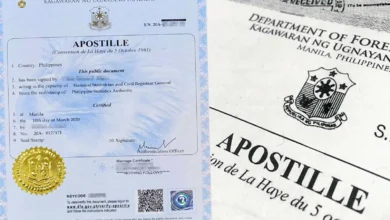
Safeguarding Youth: Guidelines for Police Interactions in Australia
As the modern world becomes increasingly complex, interactions between law enforcement and young people in Australia have been subjects of public scrutiny and intense debate. These encounters, which often walk a fine line between law enforcement and child protection, throw into sharp relief the urgent necessity of safeguarding our most valuable asset – our youth. This has given rise to the need for a well-structured set of guidelines for enhancing police interactions with young Australians. This article aims to provide an extensive analysis of this subject matter, covering the crucial importance of these interactions, cementing essential guidelines, highlighting current best practices, weighing the role of training and education, studying relevant policies, and summarising existing data with a well-rounded conclusion.
Table of Contents
The Importance of Judicious Police-Youth Interactions
Engagements between police officers and youth can leave deep-seated imprints, impacting young individuals’ perspectives of law enforcement and the broader judicial system. Abundantly documented research suggests that a positively managed interaction can retard the seeds of resentment from being sown, leading to a healthier outlook towards authority figures and the legal framework. On the contrary, mishandled encounters serve as flashpoints, leading to erosion of trust and potential foray into delinquency.
The societal implications of these interactions are not to be brushed under the rug either. When positive dialogues are held between young people and the police, it buffers their inclinations to respect the law, and act responsibly, aiding overall public safety. A stark contrast exists between the outcomes of positive versus negative interactions, making it essential for the police to navigate these waters with utmost care.
Essential Guidelines for Police Interactions with Youth
With the significance of these interactions established, we explore a variety of guidelines aimed at smoothing any friction. Respect and appropriate communication sit at the heart of any successful dialogue. Police officers must adopt a demeanour that conveys respect without coming across as condescending.
While this seems fundamental, it is often overlooked in highly charged encounters, leading to escalation instead of resolution. In tandem with this is the need to make sure young individuals fully understand their rights. This isn’t just about parroting statutes but rather about instilling a sense of security and knowledge about the framework within which these interactions occur.
Furthermore, emphasis on de-escalation over applying force should be primary in all encounters with minors. This should be prioritised over aggressive actions, which run the risk of invoking hostility and helping the incident spiral out of control, significantly affecting its outcome.
Current Best Practices in Police-youth Interaction in Australia
As the need for these improved interactions burgeons, several effective practices have emerged. One that rightly deserves mention involves police officers participating in community engagement programs, focusing on fostering relationships and building trust through activities like sports and local community events.
These initiatives weave into the social fabric a sense of mutual respect and understanding between police officers and young Australians. This informal and friendly rapport has shown encouraging improvements in interactions between the law enforcement officers and young individuals, fostering a secure and relaxed environment.
Training and Education: Keys to Better Interactions
Effective police interactions with youth don’t occur spontaneously – they are the result of well-designed training and education. Policemen in Australia receive training focused on methodologies for engaging with young people. At the heart of this training is the vital role of communication skills and understanding of adolescent psychology.
Yet, there’s always room for enhancement. To this end, Australia could benefit by exploring international best practices that encourage empathy-based interaction techniques with minors. These international concepts could be incorporated into Australian curriculums, bringing about revisions in training modules and leading to improved police-youth relations.
Policies Influencing Police-Youth Interactions
Policy-making plays a crucial role in shaping the nature of minors and police interactions in Australia. For instance, some policies strongly advocate the primacy of verbal communication before resorting to force. Meanwhile, others outline strategies directed towards creating awareness among youth about their rights when interacting with the police.
Revision and updating of such policies could vastly improve interactions. For instance, some could be reformed to embed a profound respect for youth’s individuality, fostering an environment that leads to more understanding interactions.
Conclusion
Wrapping up, it is evident that impactful police-youth interactions hinge on a multitude of factors – respectfulness, correct communication, knowledge about rights, avoidance of force, effective community practices, and most importantly, ongoing training and policy amendments. These should guide the evolution of police-youth conversations in Australia.
Through cooperation across all sectors, implementing these guidelines and focusing on continuous improvement, we can move towards a more secure future, assuring our young individuals are protected during these significant encounters.








